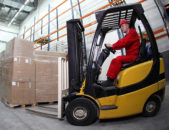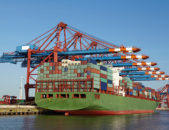2017 will bring in a new edition of the ICAO Technical Instructions which sees ICAO’s biennial catch up with the UN Model Regulations; this time to reflect the 19th revised edition. In consequence, IATA also plays catch up with updating and upgrading their DGR manual to parallel the new edition of the TI. Usually this…
What too many hazmat shippers forget about LTL shipment security
Seals Series, Volume 5 — Did you know that more shipments are moved on pallets and in crates than in full containers? It’s true—and, unfortunately, many of those less-than-load (LTL) Dangerous Goods shipments are not as secure as their shippers think. Some shippers feel that once the shipment has left their facility, they are no…
Why PVC belongs on your turntable, not your hazmat labels
Ask any music fan—vinyl is in a full-fledged comeback. Old records are emerging from basements and grandparents’ houses everywhere, and the pressed black polyvinyl chloride (PVC) disc is once again the hip way to buy new music. PVC was once the hip material for hazmat labels, too. But environmental and health concerns about PVC have…
How can you keep customer returns of Dangerous Goods compliant?
Q: Reviewing the PHMSA HM-253 Final Rule on reverse logistics issued March 31, it appears it doesn’t really address returns from consumers to suppliers or manufacturers. How do you suggest keeping these shipments compliant? You are correct. Although the new PHMSA ruling contains regulatory relief for reverse logistics shipments that originate from retail stores, it…
“I shipped lithium batteries for that?” The 10 dumbest battery devices
Shipping lithium batteries is challenging, with new air shipping regulations making air transport for many batteries all but impossible. But at least you know those batteries power the devices that make our world more amazing by the day, right? Well, not always. For every life-altering phone, tablet or fitness tracker, there’s a device so pointless…
Ultimate hazmat security: C-TPAT Compliant Seals
Seals Series, Volume 4 — A massive freighter docks overnight at a U.S. port. Its containers hold the kind of hazardous material that, in the wrong hands, could put countless American lives at risk. The next morning, the containers are offloaded to trucks and trains that take them to every corner of the country. A…
Domestic shippers take note: PHMSA to adopt ICAO lithium battery rules
When the International Civil Aviation Organization (ICAO) and International Air Transport Association (IATA) imposed new lithium battery air shipping restrictions April 1, 2016, many shippers whose products never cross US borders believed that the new rules didn’t apply to them. Because those restrictions have not been adopted into the U.S. Hazardous Materials Regulations (49 CFR),…
How a security seal control program protects your hazardous materials
Seals Series, Volume 3 — Seals are a great, underappreciated hazmat security tool. In our last couple of posts, we’ve talked about situations where seals are essential in Dangerous Goods security, and where seals are a better choice than locks. But seals by themselves can only do so much. To fully exploit their potential, you…
16 reasons to sign up for the 2016 Dangerous Goods Symposium now
The 2016 Dangerous Goods Symposium—a.k.a. DGS XI—is slated for September 7–9, at the Loews Chicago Hotel. As always, the Symposium will feature workshops and presentations from some of the sharpest trainers and practitioners in the Dangerous Goods galaxy, along with unparalleled networking and plenty of downtime pleasantries. DGS XI will only be free for…
Dangerous Goods Report | Vol. 5
Lithium Battery Shipping—Retail Rolls with the Changes. Cover Story: Challenging skies for lithium battery shippers. As lithium battery shipping regulations get even more complex and restrictive, retailers must adopt new processes and tactics. A look inside UN-certified packaging. Do you need it? Is it worth it? And what do all those letters and numbers mean?…









